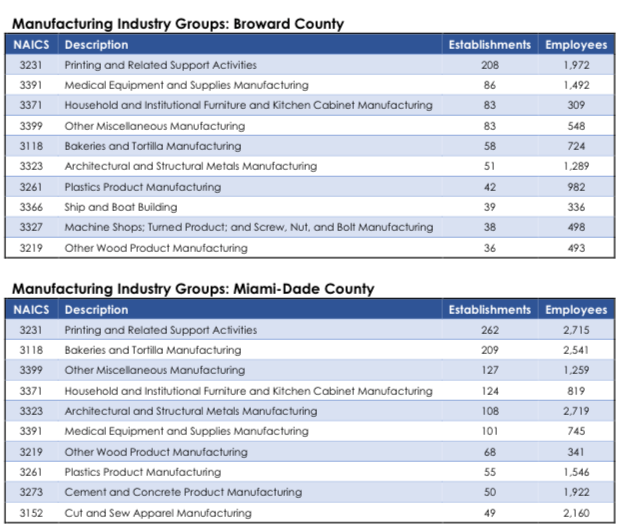With the growing realization that the COVID-19 impacts will continue to ripple through the economy well into the future, researchers at Florida International University’s Metropolitan Center dove into the need for economic development planning for a post-Covid environment. The challenge: “Making our core industries less vulnerable to economic shocks while nurturing industry sectors with economic growth potential in the coming decades,” its new report said.
To underscore the importance of such a framework, the researchers point out that the St. Louis Federal Reserve identified “high risk” occupations for job loss including accommodation/food services and retail. The study said high risk occupations comprise 48% of occupations or 1.3 million jobs in the Greater Miami economy. Add to that the growing reliance on gig work (contract workers often with no benefits such as health insurance) that some experts say will make up half the economy within a decades.
The FIU researchers s believe that given the devastating impacts from COVID, one challenge will be reskilling the existing workforce (many of whom have seen their jobs disappear in this crisis) to be part of the next industrial revolution that is upon us.
MANUFACTURING A NEW ECONOMY
An interesting area of focus, the researchers believe, is on South Florida’s manufacturing sector, particularly in technology-focused advanced manufacturing. Manufacturing has not been hit nearly as hard as the hospitality and retail sectors. What’s more, in the U.S. there are as many as 600,000 unfilled manufacturing job openings.
“While manufacturing is not one of South Florida’s leading export industries, its presence and growth potential should make it a targeted sector for reindustrialization thinking and strategy know-how in the post-COVID economy,” the report said. The researchers said this would require a far more active role for economic development professionals because “successful manufacturing can only be achieved through formalized private public partnerships that comprehend the many aspects production, including supply chains, facility planning , logistics, technologies, capital investment, job training and institutional support.”
There are many reasons to support manufacturing and try to grow it to be a larger piece of the local economy, the researchers said. Technology is reducing the space needs of manufacturers, allowing manufacturing to return and grow in urban areas. And it’s not your grandfather’s big, dirty manufacturing industry. Manufacturing processes are cleaner with a lower impact on the environment, and the trend is toward smaller manufacturing facilities in major population areas. “Creative land development, local branding efforts, and apprenticeship programs are some examples of strategies that will support and grow the sector. … Essential to this effort will be upskilling. With 62% of existing occupations automatable, training and preparing workers for these changes will be an essential step in building a resilient post-COVID local economy.” [READ THE FULL REPORT HERE.]
STRONG SECTOR
The manufacturing sector in South Florida is already well established but if nurtured could be a key component of a post-Covid economy. The 2019 report Make It Miami by the Metropolitan Center and Florida SBDC at FIU identified 2,847 manufacturing establishments – the great majority of them small businesses — employing 40,893 workers in the county. The research also found that one-third of the companies were in the advanced manufacturing sector.
And further research shows that the sector is fairly robust across South Florida:


Miami-Dade’s manufacturing sector doesn’t get the coverage of some of the other areas of the economy, but it is no less important. This sector connects Miami’s economy to national and international markets and significantly impacts the area’s economy.
SIGNIFICANT FINDINGS FROM THE MAKE IT MIAMI REPORT:
- Fast growth. The manufacturing sector increased 14.5% from 2012 to 2017. That’s growth of about 5,000 jobs, from 35,738 workers in 2012 to more than 40,800.
- Small but mighty.While manufacturing is not among the top employers in Miami-Dade, with only 4.1 percent of private workers employed in this sector, it contributes an economic output of $17.6 billion annually – almost 7 percent of the county’s economy overall.
- The multiplier effect.Manufacturing connects with other sectors in South Florida through a multiplier effect. For every job gained or lost in manufacturing, as many as two to three jobs in other segments of the economy may also be gained or lost.
- Stronger wages.Manufacturing creates high-paying, high-skill jobs, with many employees earning above the county’s median wage. A third work in “advanced industries,” characterized by technology, R&D and STEM (science, technology, engineering, and math) workers, where more than 13,000 earn an average of $57,000. In some sub-sectors, like pharmaceutical and medical manufacturing, average wages are over $92,000.
Still, in a survey taken last year, nearly a third of current Miami-Dade manufacturers said have considered relocating out of the county due to the cost of doing business, the need for access to new markets and customers, high insurance costs, a lack of tax incentives, and the need for a more qualified labor pool. [READ THE MAKE IT MIAMI REPORT HERE.]
READ MORE in Growbiz: MIAMI-DADE’S MANUFACTURING SECTOR IS SMALL, BUT ITS IMPACT IS MIGHTY
Please send GrowBiz topic suggestions and feedback to GrowBiz@FIU.EDU

